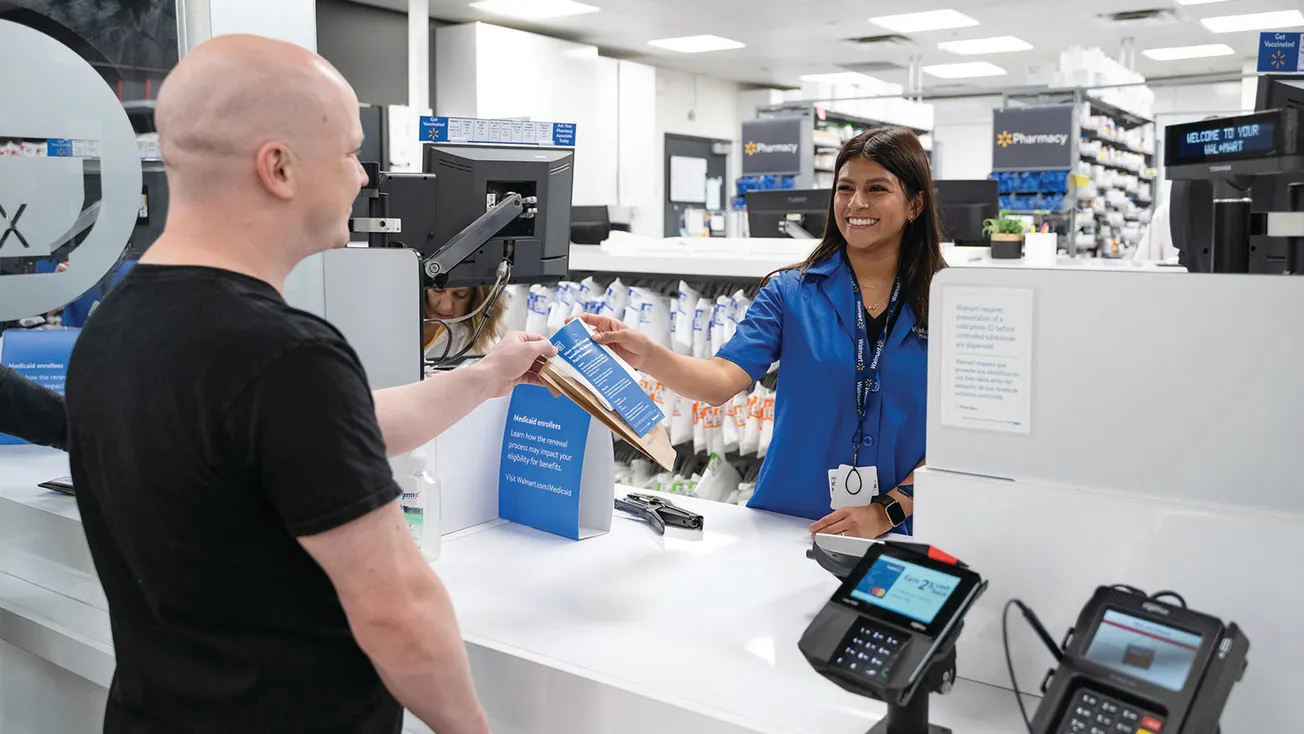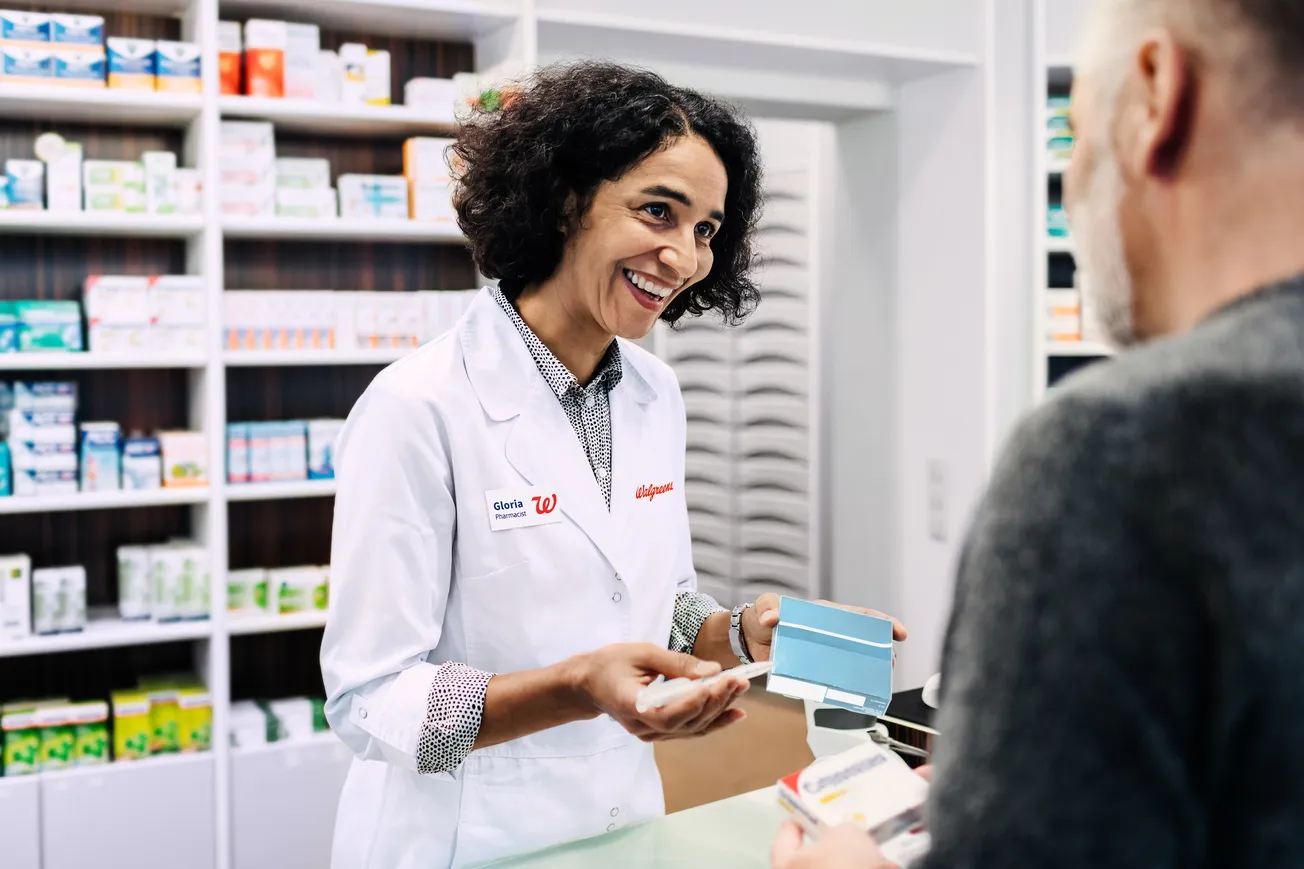In preparing for the National Association of Chain Drug Stores Annual Meeting this year, I find myself thinking about the myriad opportunities reshaping retail pharmacy, including overcoming declining margins, winning expansion of pharmacist provider status, and leaning into consumer needs and value-based care. As I do so, I keep coming back to the guiding principle that we have been entrusted by our investors to create value by delivering patient safety, access and affordability in health care.

Lari Harding
Many executives who would gladly answer this call to action instead find themselves far too focused on explaining financial statements from declining reimbursement rates, DIR changes, and high-dollar drugs with upside down margins like the GLP1s. We need to change that and get back to what really matters and get to a place where we can create real value. Let’s innovate together to make sure the business of pharmacy returns high value to both the patients we serve and the investors that back us.
Safety is critical to our
mission
While the Commonwealth Fund’s 2021 report comparing U.S. health care to that of other high-income countries ranks us last on access to care, administrative efficiency, equity and health care outcomes, they rank us second in their care process category that includes safety. As a nation we are very focused on patient safety, and there are innumerable regulations in place to protect those in need of care. And with good reason.
According to the Poison Control Center, 3,316 reports of fake Ozempic were sent to America’s Poison Center in 2023, up more than double from 2022. Sixty-six of those reports involved hypoglycemia, and most of those patients wound up in the hospital. For all that we’ve accomplished, there is still much work to be done.
With COVID-19 in the regulatory rearview for most of the federal government, the Federal Drug Administration is hyperfocused on ensuring product safety throughout the pharmaceutical supply chain. This effort is manifesting itself in ways that should have the attention of both manufacturers and pharmacies.
According to the FDA’s most recent report on establishment inspections, the agency completed a total of 2,061 CGMP inspections of registered domestic drug and device establishments in calendar year 2022 versus the 1,311 inspections it carried out during CY 2021. If you do the math, that’s an increase of 57%. The result of this additional scrutiny has, not surprisingly, been a significant uptick in recalls. At Inmar, we tracked 575 events in 2023, compared to 521 in 2022 — a 10% increase.
At the same time, full enforcement of DSCSA (Drug Supply Chain Security Act) interoperability requirements will begin in November 2024. Implementation of the act has been over a 10-year process to reduce the introduction of counterfeit pharmaceuticals into the supply chain and further ensure patient safety. The industry has spent millions of dollars on drug serialization — and with new products in high demand like the GLP1s we need to cross the finish line on enacting this industrywide safety protocol so that we can deliver value beyond compliance.
Even as we work to mitigate the threat to public health from illicit drugs, the persistently devastating impact of the opioid crisis continues to shake our country. According to the National Institutes of Health, mental illness, often undiagnosed, increases the risk of opioid use disorder and can interfere with a person’s ability to make health care decisions. Rising feelings of anxiety and depression are being reported in multiple demographics of Americans, with NBC News reporting that 50,000 Americans died by suicide in 2023 — more than any year on record.
Therefore, it is not surprising that 58% of the panelists surveyed for the 2024 ASHP (American Society of Health-System Pharmacists) and ASHP Foundation Pharmacy Forecast believe the mental health crisis will be declared a public health emergency in 2024.
Putting aside what the AMA may say about it, those of us in the industry know that pharmacies can certainly play a role in the solution.
Declining access is a
growing concern
Falling pharmacy profitability is an ongoing problem, resulting in closures of pharmacies. The closures are creating pharmacy deserts in areas where access to health care is already limited. In many of these same rural communities, their hospitals are also closing. Between 2005 and 2019, 104 rural hospitals closed, and more than 600 additional rural hospitals — 30% of all rural hospitals in the U.S. — are at risk of closing in the near future, according to the Center for Healthcare Quality and Payment Reform.
According to County Health Rankings & Roadmaps (CHR&R), a program of the University of Wisconsin Population Health Institute, clinical care ranks well behind social and economic factors and health behaviors in influencing health outcomes -— with 80% of a person’s health being attributable to social, physical and other factors outside of clinical care.
Retail pharmacies offer access to more than just prescriptions — it’s access to self-care, over-the-counter medications, and even food. A recent article from NBC News addressed how fruit and vegetable prescriptions were driving material health care results. There are many examples throughout the country of similarly focused Food as Medicine programs experiencing great success.
Maintaining accessibility means keeping pharmacies profitable. While there have been many successes in payment reform legislation, with one or more aspects of NACDS’ principles for PBM reform being adopted in every state, enforcement is difficult, as I discussed in a prior DIR Update for Chain Drug Review.
Even though the AMA has challenged pharmacists on expanding their scope of practice, many basic primary care services can, and should, be delivered by retail pharmacies — which is also a new revenue opportunity for them. Access to health care must improve, and retail offers both a consumer-friendly approach and an attractive cost model.
Affordability is a
high-profile issue
According to the Kaiser Family Foundation, 82% of adults say the cost of prescription drugs is unreasonable, and three in 10 say they haven’t taken their medicine as prescribed due to costs. Watching President Biden’s recent State of the Union Address, his focus on cost-saving ideas for prescription drugs was significant. He mentioned capping out-of-pocket prescription drug costs for all Americans and allowing the federal government to negotiate drug prices.
The president’s call for lower drug prices echoes that of many but, as The Wall Street Journal pointed out in a February opinion piece, “Be Thankful for High Drug Prices,” the price Americans pay for drugs reflects the U.S.-focused R&D that brings life-saving medications to this country first — before anyone else has access. The piece makes it clear that, yes, we are financing drug discovery and development for the world but, if Americans aren’t willing to pay for R&D, then we might not have it.
While the FDA approved Florida’s Canadian Drug Importation Program earlier this year, the initiative is riddled with operational challenges related to DSCSA and faces uncertainty around Canada’s willingness to sell drugs to the U.S., creating serious doubts as to whether this effort could actually bring down drug costs for consumers in the state.
We can’t talk about affordability without talking about Mark Cuban. While he can be polarizing and critical of the industry, he makes some very valid points. The business models in our industry have mutated since the beginning of prescription drug benefit programs in the 1960s. And today, the middlemen keep drug prices high and make a lot of money in the middle. At the same time, retail pharmacy margins have declined and the gross-to-net for pharma has become more significant. Gross-to-net represents the difference between a pharmaceutical manufacturer’s gross sales revenue and the net revenue that is recognized after accounting for various sales deductions and adjustments.
Mark Cuban’s Cost Plus Drugs “bypasses middlemen” by working directly with drug manufacturers in order to offer lower prices. What started as a cash-pay online pharmacy has become a network with momentum to combat PBMs. Now it has expanded to include a Cost Plus Card program accepted by independent pharmacies and several major retailers. The 15% markup on the price the company pays for the drug, plus an $8 dispensing fee, which goes to the retail pharmacy, and a $1 processing fee are better economics for the pharmacy than many of their contracts and traditional discount card programs. This program offers some patients more affordable prescription drugs than using insurance benefits.
Let’s keep disrupting and
innovating
As we gather for NACDS Annual, let’s keep disrupting and innovating. We can keep recalled products out of the drug supply chain. We can validate every product in the supply chain with interoperability. We can provide solutions to opioid use disorder and mental health. We can improve access and expand health care services in pharmacies at a better value. We can experiment with affordability solutions that deliver lower costs to patients and protect the R&D needed in the world. There is a bigger mission that we must remain purposefully focused on — patient safety, access and affordability. I look forward to collaborating with the industry on this mission.
Lari Harding is senior vice president of healthcare marketing and sales enablement at Inmar Intelligence.









